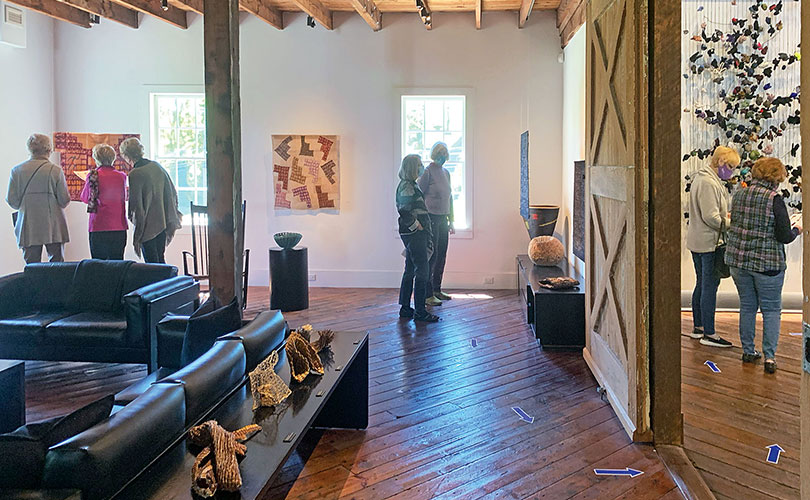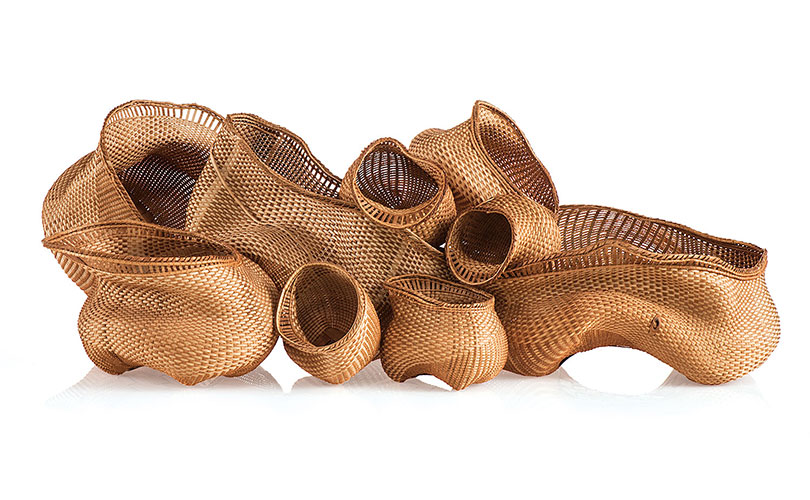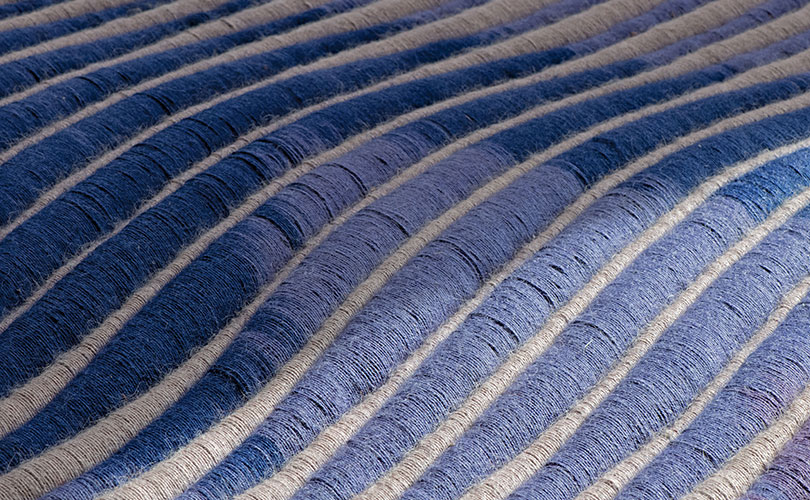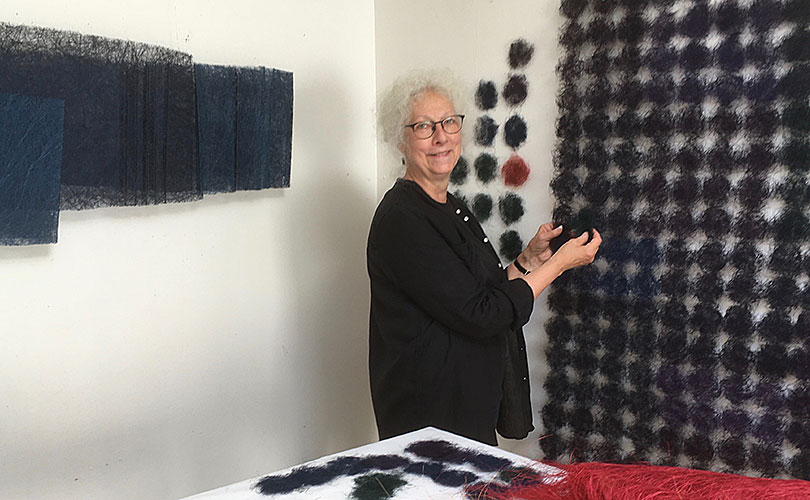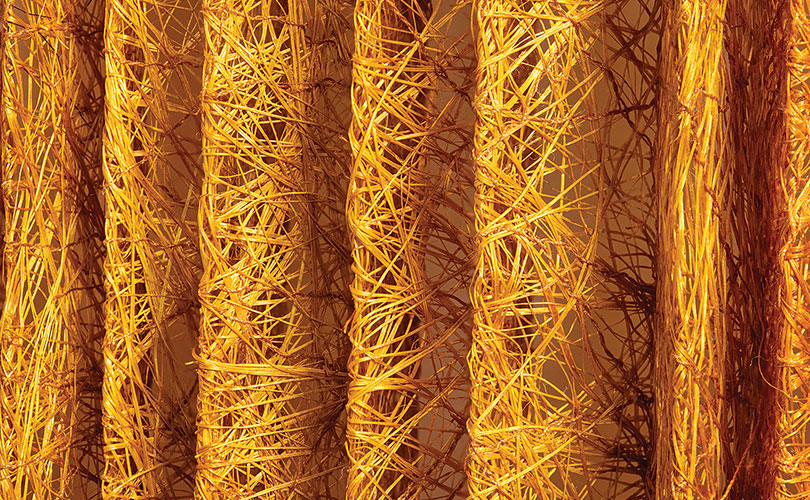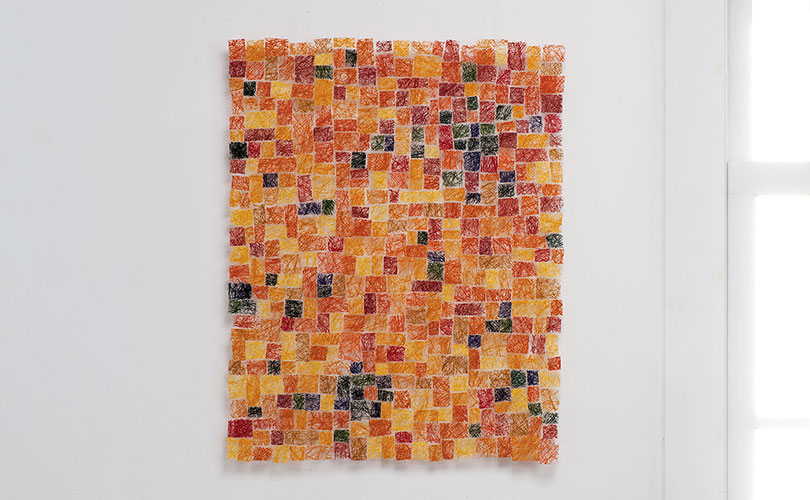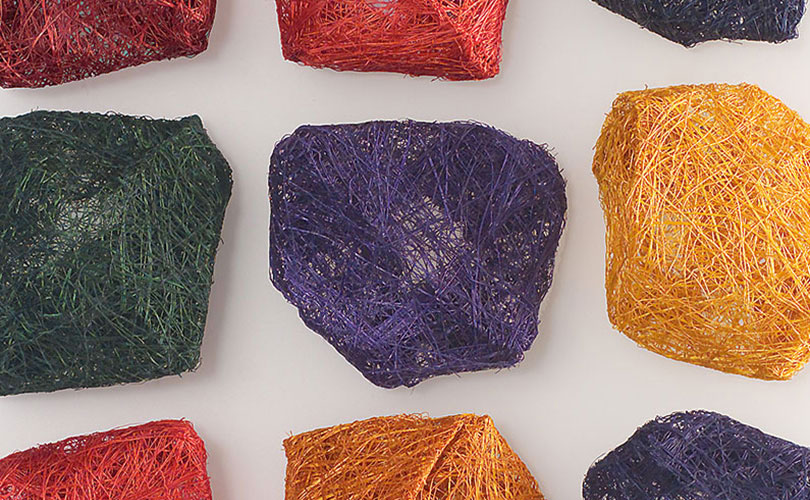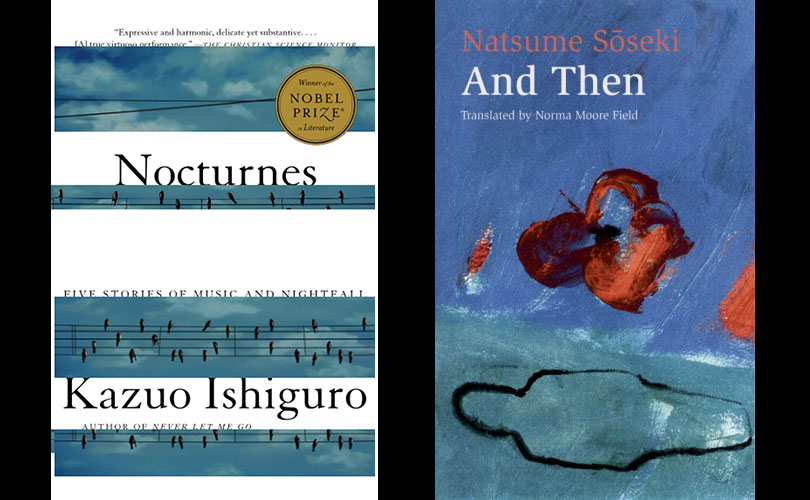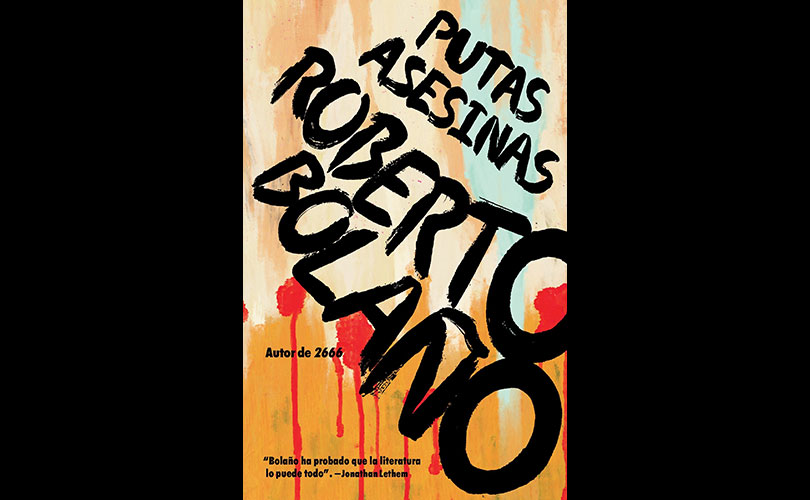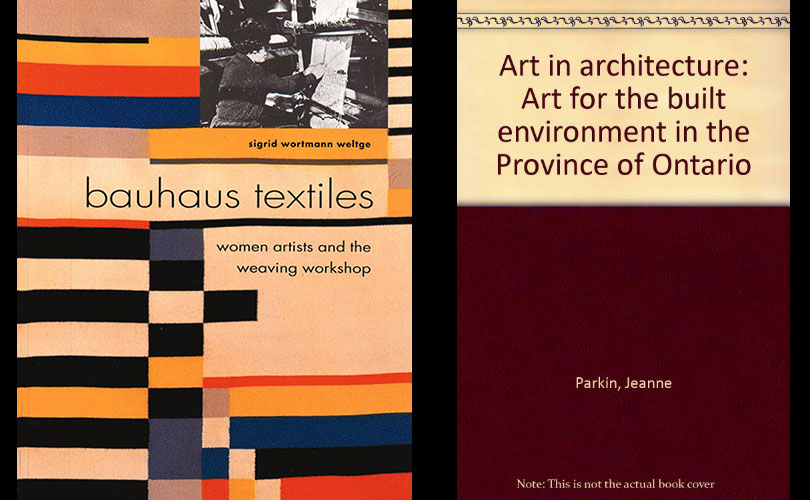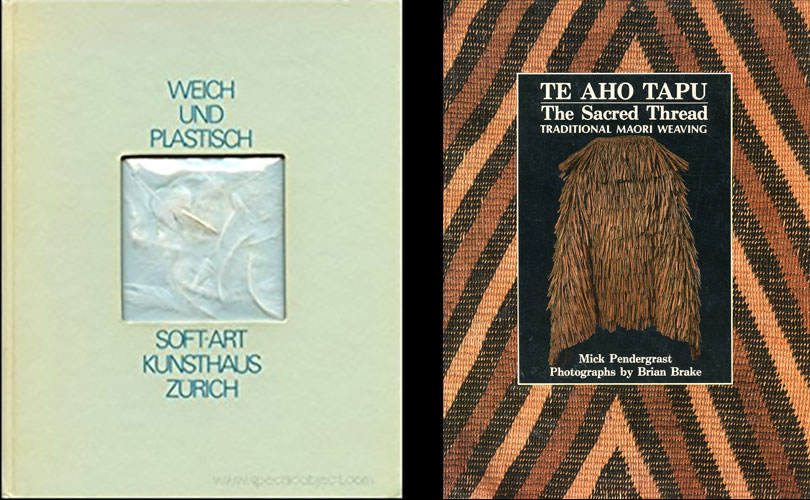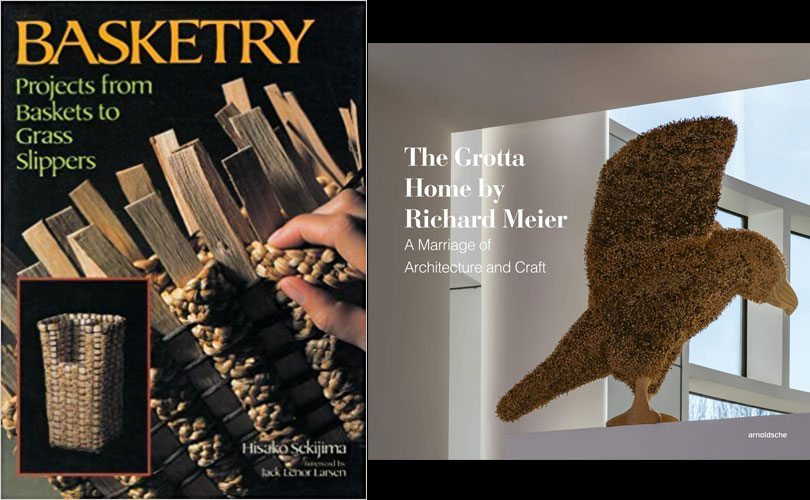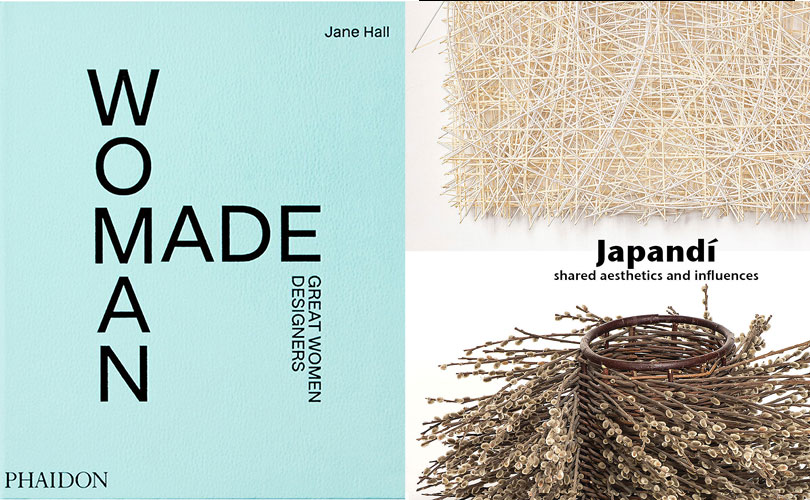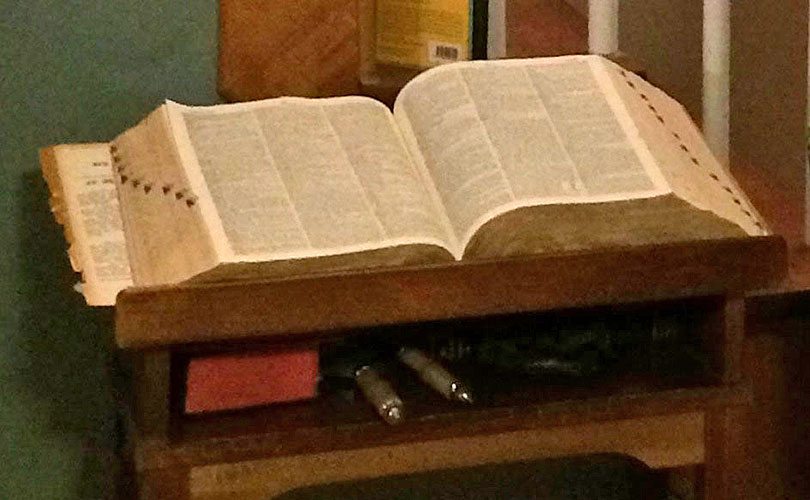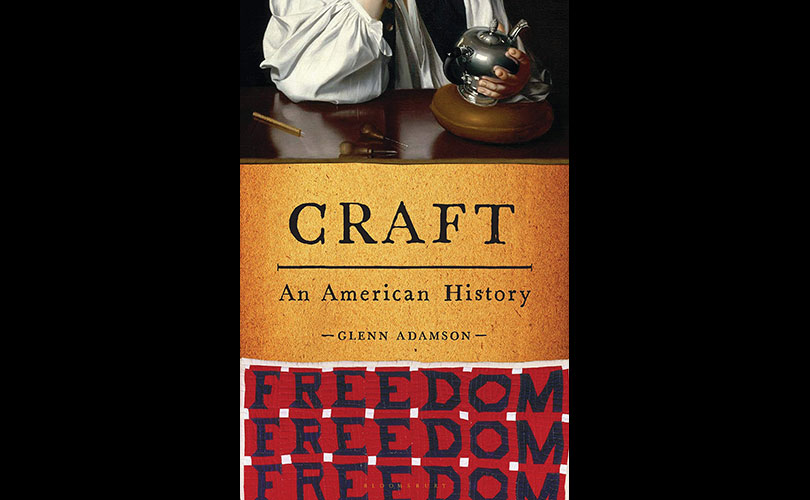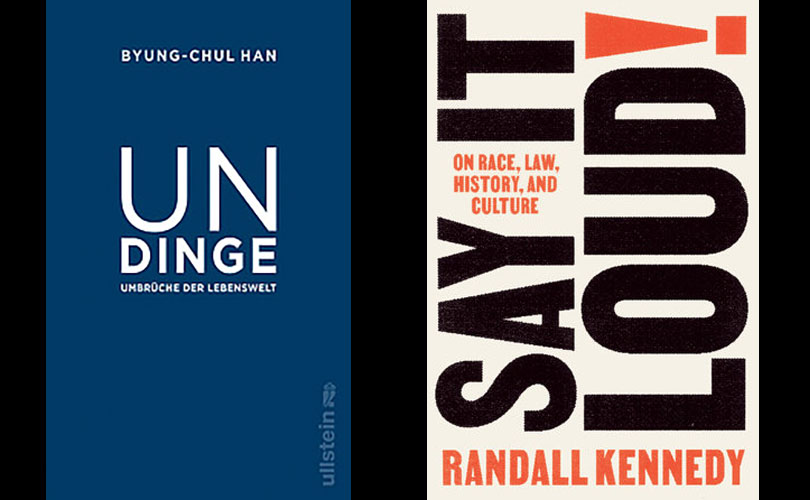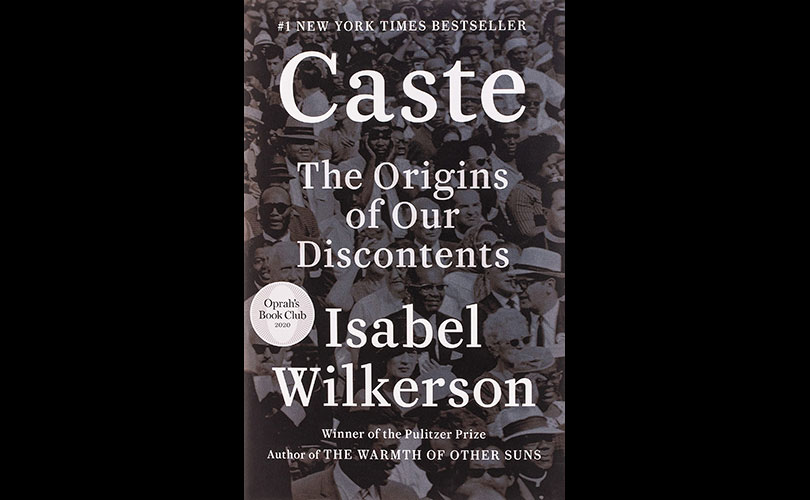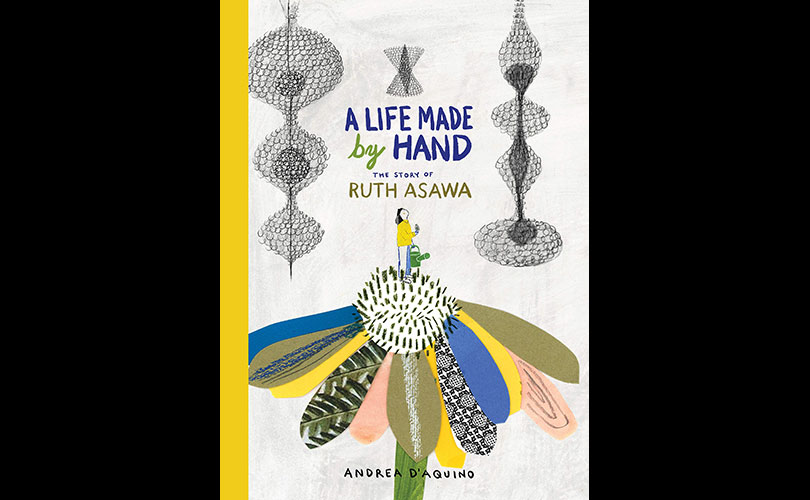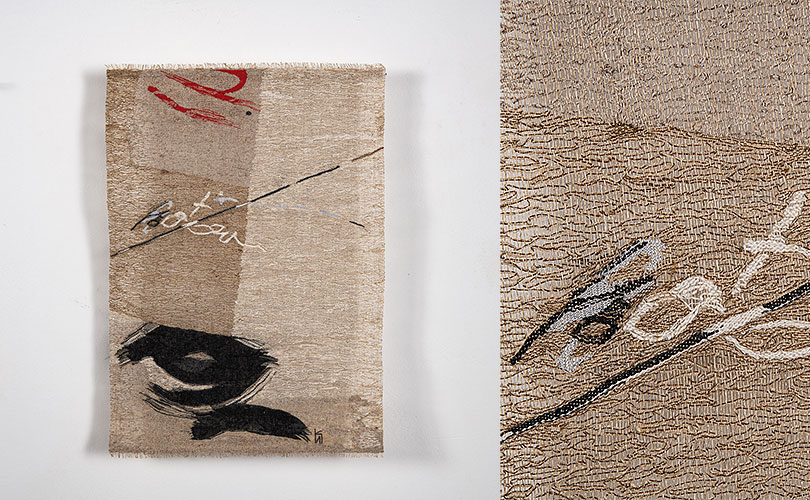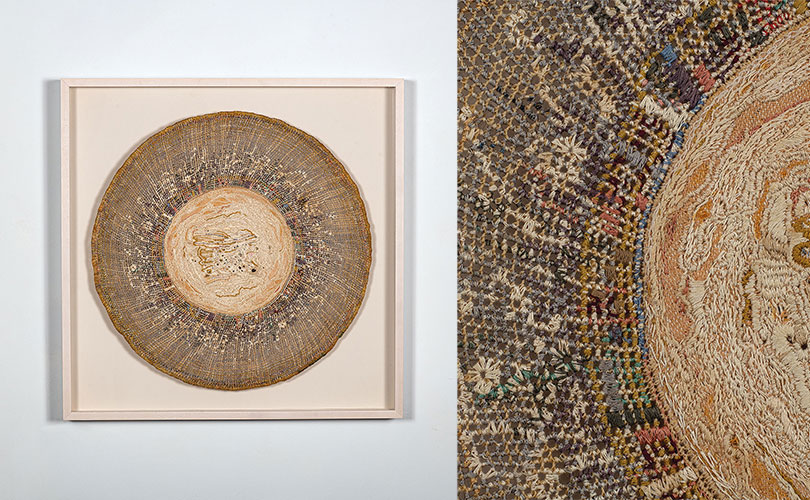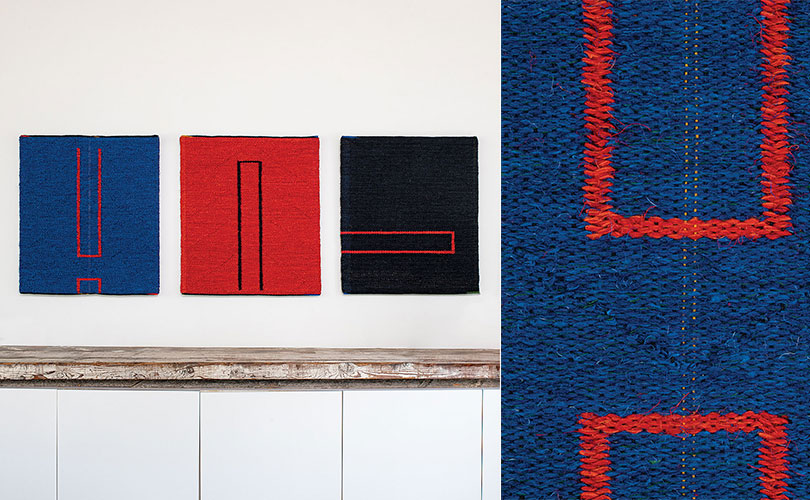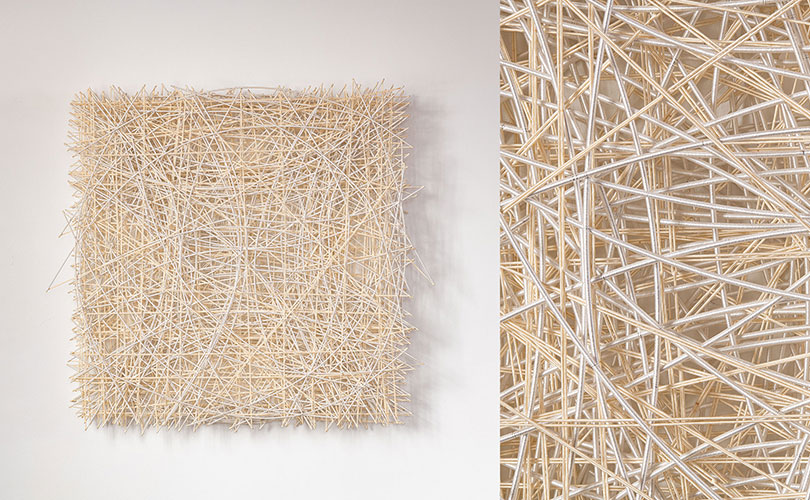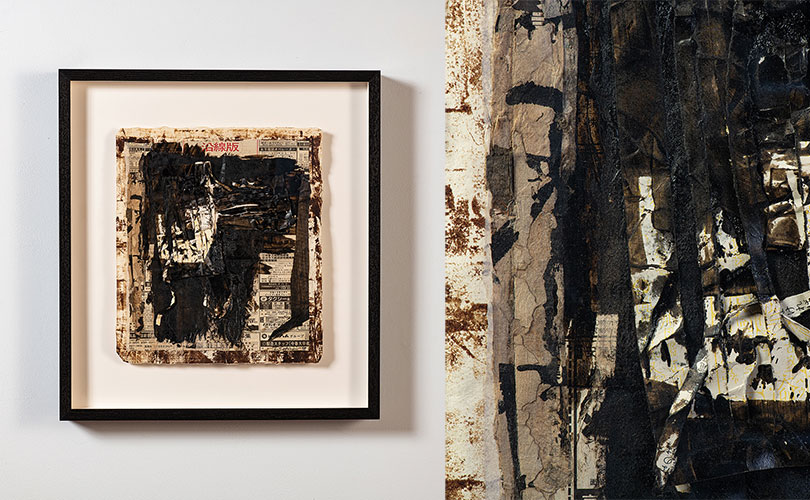As this year comes to a close, we’re finishing our New This Week series with some of our favorite artists! Throughout the month of December we’ve highlighted art from notable artists like: Norie Hatakeyama, Mia Olsson, Grethe Sørensen, and Åse Ljones. Here’s a recap of all the art we’re closing out 2021 with.
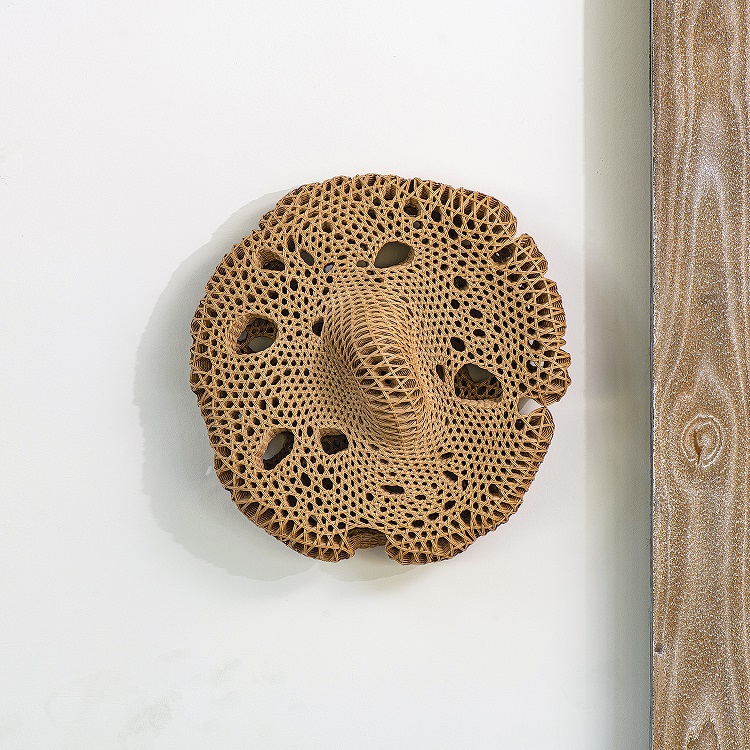
Norie Hatekayama 22nh Complex Plaiting Series Two Force 9801 plaited paper fiber strips, 12” x 12” x 5.5”, 1998. Photo by Tom Grotta.
This piece comes from Japanese artist, Norie Hatakeyama. Hatakeyama is predominantly known for her contemporary and complex plaited works of paper tape. The works resemble living organisms — and, on close inspection, have no apparent starting or endpoints.
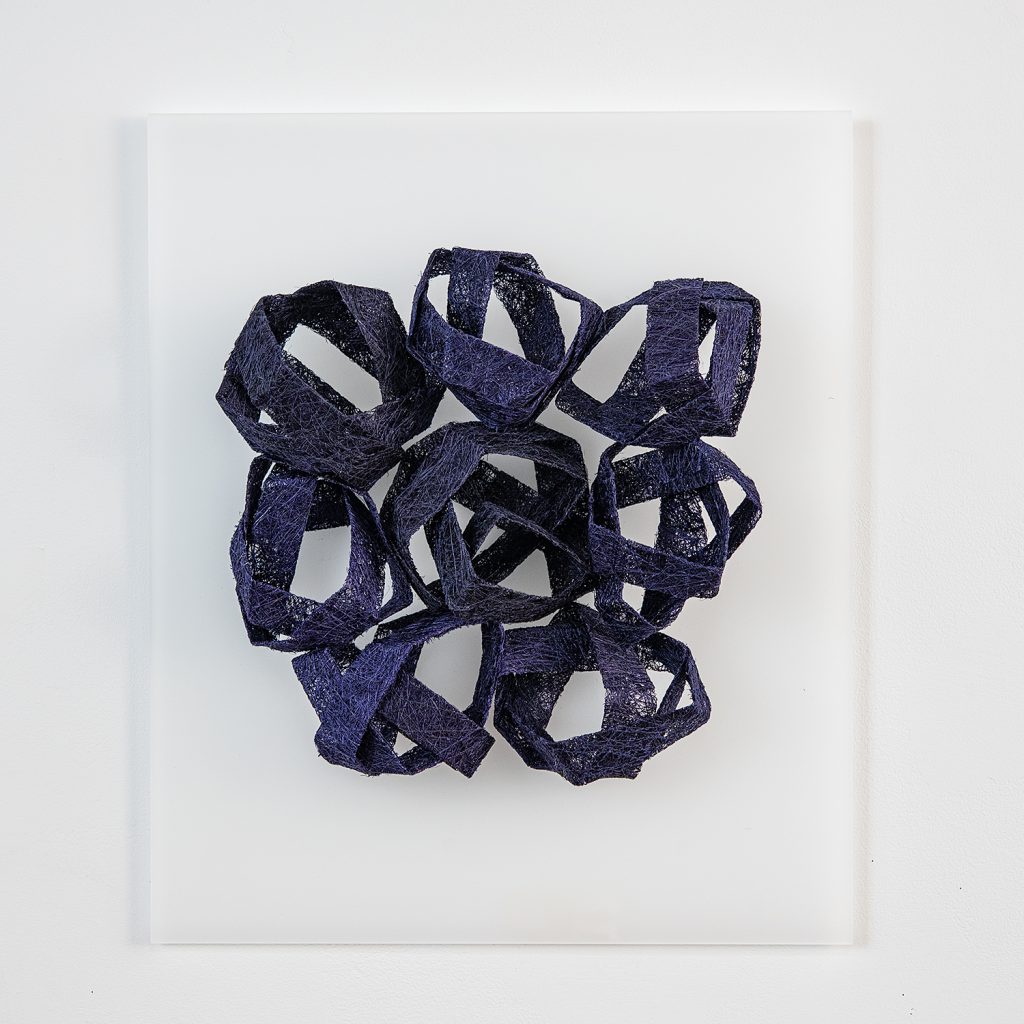
11mo Together, Mia Olsson, sisal fiber relief, acrylic, 17.75″ x 15″ x 3″, 2021. Photos by Tom Grotta.
This piece comes from Swedish artist, Mia Olsson. Together is made of sisal fibers, dyed and formed in a technique unique to Olsson. The sisal fibers used are shiny and reflect the light, even more when formed in relief. The colors are richly saturated — engaging the viewer on each viewing.
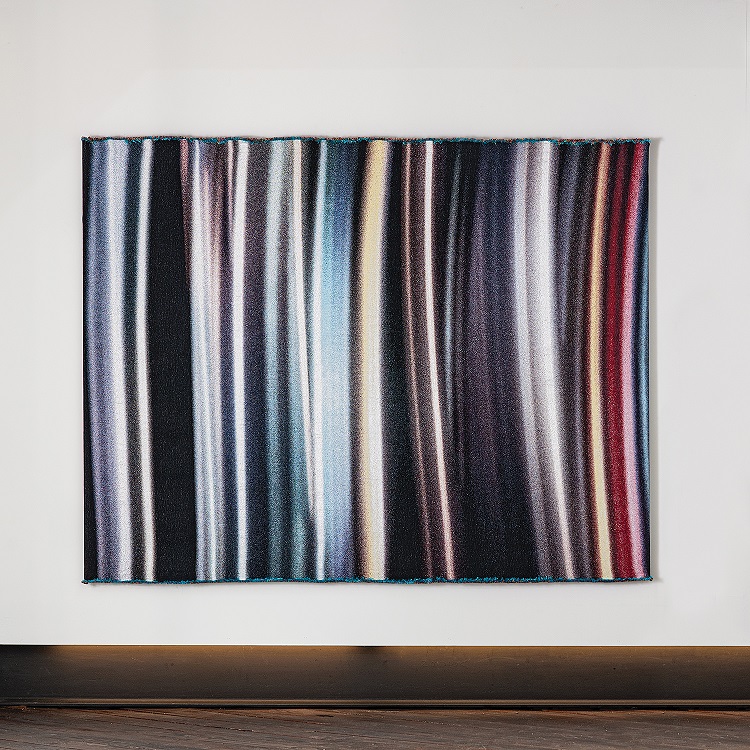
Grethe Sørensen, 21gs Tokyo Nights ‘Light Reflection 2’, Organic cotton, Trevira CS, viscose, 65″ x 82.5″, 2021. Photo by Tom Grotta.
This piece comes from internationally acclaimed artist, Grethe Sørensen. Since 2004, she has been working exclusively with digital thread control/digital jacquard weaving. She is credited with revolutionizing the art of tapestry through her method of converting photographic pixels into threads. The technique allows her to create complex motifs; the city, urban landscapes, light and optical patterns are frequent inspirations for her.

15al Tangled In, Åse Ljones, hand embroidery on linen, 31.625″ x 55.25″ x 2.5″, 2016. Photo by Tom Grotta.
This artwork was created by talented Norwegian artist, Åse Ljones. Ljones uses a blizzard of stitches to create her works. Ljones told TextileArtist.org in an interview that, “To embroider by hand takes time. It is a slow process that gives room for silence. I seek silence. In silence, I retrieve memories and find new paths forward. In all my work as an artist I have eliminated the extraneous. I’ve cultivated simplicity to approach the core of myself, in myself, with fewer measures.” For Ljones, “the sewing needle is like the pencil is to the author,” with it, she can create pictures and tell stories.
Thank you to everyone who’s been a part of this past year at browngrotta arts. We’re going into 2022 excited for another year of art-filled fun!

